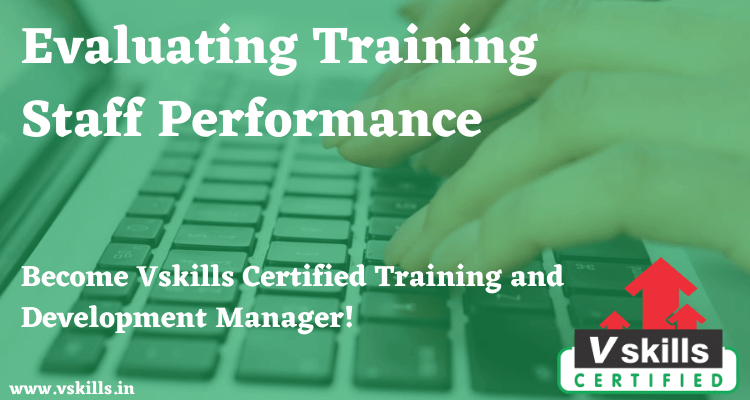Evaluating Training-staff Performance– Evaluating Training of Workers, Administrators, Trainers, Managers, Technicians is a process which can be made simple by clearly answering the ‘what’, ‘when’, ‘who’ and ‘how’ of evaluation. The whole thing looks complex when something is measured to evaluate something else. For example we tend to evaluate the trainer whenever we talk of classroom training. But if the training manager has failed to choose the right inputs, he is looking at the wrong things by evaluating the trainer. The best trainer available cannot train employees if the inputs do not deal with their deficiency on the job (input evaluation). By the same token, we cannot expect the best trainer to help improve the organisation if the wrong set of people is selected for training (context evaluation). So part of the evaluation has do with the training organization’s skill in selecting the inputs, setting specific objectives and getting the right set of trainees to the training. Even then, we may evaluate the wrong thing. We may watch the trainer in action and decide that he is doing a good job because there is lot of action, movement and variety. The concerned faculty may be a good performer; he does not lean on the podium, does not talk while facing the board, and gets lot of eye contact (good lecture skills). We have to remember that we are looking for is not a good public speaker, but a good facilitator of learning. So the characteristics of a good learning situation are: accountability, feedback and involvement which helps us evaluate whether the trainer is doing his job properly. Whatever be the trainee group, it is important to identify the characteristics of its learning-training situation. Once this has been identified the evaluator is left to use the appropriate evaluation model. There are a few options:
- Borrowing the model off-the-shelf from those presented in this book or other published/available literature;
- Hire the services of consultant specialists to develop the evaluation model exclusively for your needs;
- Train your own personnel in developing the model internally;
- Combine the first two options by using specialists’ services to develop the model while concurrently training some of your own personnel for gradual takeover of the task.
Each of these has its advantages and disadvantages. While borrowing the ready model is easy it may be too general to meet the requirements of a particular situation. Unless the expertise is available within, the evaluators may not be able to adapt the available model.
But if the expertise is available it is advantageous to develop one’s own model so that there is internal control on the strategy, techniques and cost of evaluation. Besides, the skills and expertise developed within become part of the resources for the organization and can be generalized for use in other types of training and target groups.
Test Your Skills By Taking Our Training and Development Practice Tests on this link
Apply for Training and Development Manager Certification Now!!



